Results
-
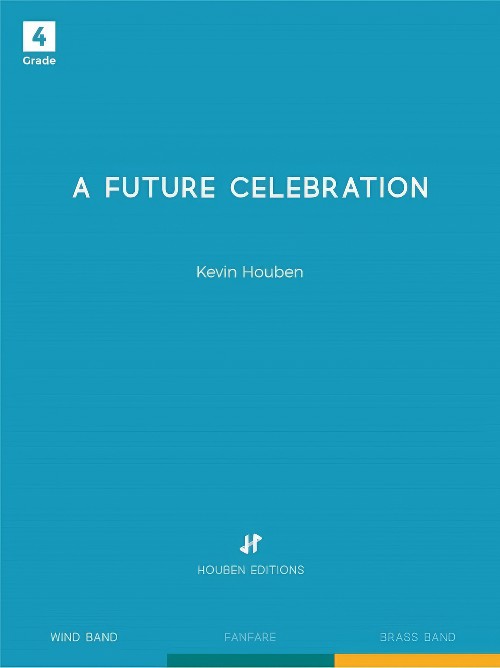 £104.00
£104.00A Future Celebration (Concert Band - Score and Parts) - Houben, Kevin
Future Celebration was composed on the occasion of the 125th anniversary of the Royal Socialist Wind Band 'De Toekomst' from Sint-Niklaas (Belgium). In this colourful compostion Kevin Houben succeeds in evoking the bustling textile and cigar industry of the nineteenth and twentieth century in this East Flemish city Sint-Niklaas. After all, these crafts were characteristic for the wealth they brought to the city. Still testimony of this are the 2 unique (niche)museums in Sint-Niklaas: the Knitwear museum and the Pipe and Tobacco museum. Even in times of great crises eg. during the Interbellum the city continued flourishing proving the unique collection of classified art deco houses, amongst others the former People's House, in which the Royal Socialist Wind Band still rehearse. This historic background of Sint-Niklaas and of the Wind Band in particular has been musically presented by Kevin Houben in Future Celebration. The brief, but energetic and powerful opening of the work by the brass instruments gives musical expression to Sint-Niklaas as a prosperous city. After the presentation of a majestic and lyrical theme by the woodwinds an allegro with a cheerful theme takes a look at the future, hopefully looking at the next milestones/ celebrations the city and its orchestra are still expecting in the future. Duration: 6.00
Estimated dispatch 7-14 working days
-
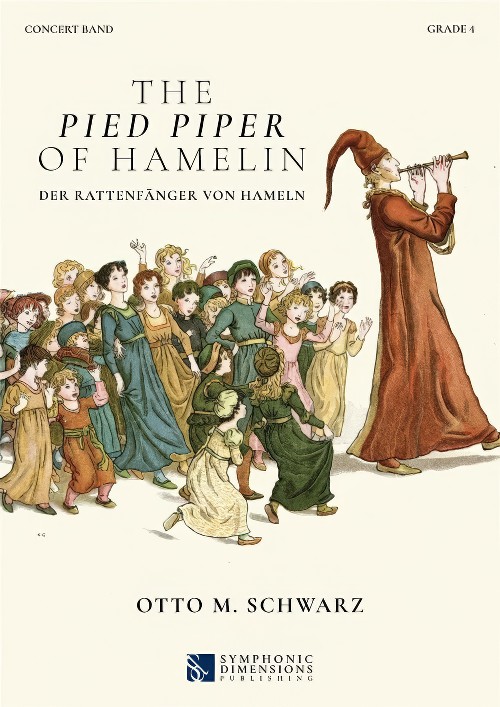 £163.99
£163.99The Pied Piper of Hamelin (Concert Band - Score and Parts) - Schwarz, Otto M.
Stories, sagas and legends--who among us don't know them? Always delivered with a tinge of brutality, these cautionary tales are a legacy of moral education from times past: inquisitive children alone in the forest are generally eaten by a witch; the 'Soup-Kasper' of Hoffmann's Struwwelpeter dies from starvation rather than eating his soup; anyone letting in strangers usually gets devoured; anyone who plays with matches gets burned; and thumb-suckers get their thumbs cut off. The list of unfortunate demises is almost endless.In the tale of The Pied Piper of Hamelin, parents lose their children through greed, ridicule, scorn and a failure to appreciate art. There is still a street in the town of Hamelin in which neither drumming nor playing has not been allowed since 130 children disappeared into a mountain, never to be seen again. This composition by Otto M. Schwarz opens with exactly this scene, taking us back to the year 1284. As in many towns at the time, Hamelin in Germany suffered with hygiene problems--rats and mice began to multiply rapidly, and the town was overrun with the plague. There appeared a man dressed in colourful clothes who promised the locals to free them from this burden. They agreed and settled on a fee. Then the man pulled out a pipe and began to play. When the rats and mice heard this, they followed him. He led the animals into the Weser River, where they all drowned. Back in town, the people refused to pay him. They didn't recognise this man's skills and knowledge and were only prepared to pay for simple labour. A pact with the devil was made, which led to the Pied Piper leaving the town in a furious rage. One Sunday, when many people were at church, he returned, took out his flute and began to play. The town's children were so enchanted by his playing that they followed him. He led them out of the town and disappeared with them forever into a mountain forever. Of all the children, only two survived--however one was mute, and one was blind. In the street from which the children left Hamelin, music may no longer be played in memory of this event. The work may be performed in two different versions: 1. Purely instrumental (without narrator)--the GPs (pauses) must be kept short 2. With narrator--he speaks in the GPs but not during the music.Duration: 14.15
Estimated dispatch 7-14 working days
-
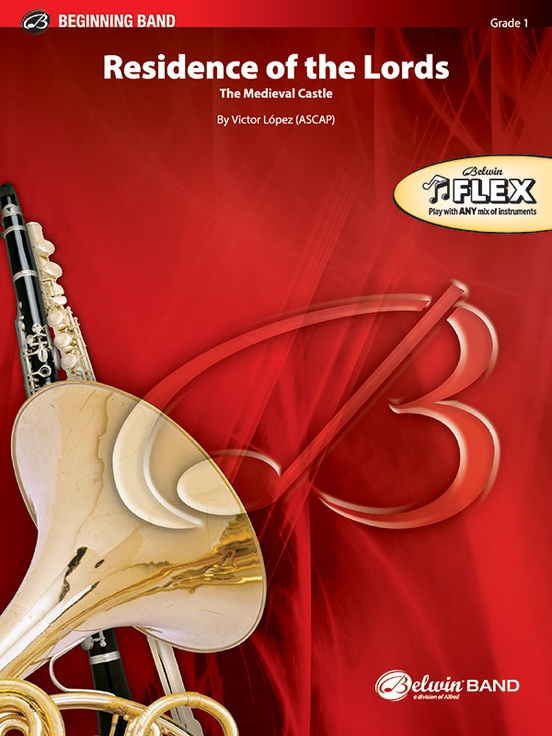 £53.95
£53.95Residence of the Lords (The Medieval Castle) (Flexible Ensemble - Score and Parts) - Lopez, Victor
This version of Residence of the Lords by Victor Lopez is designed with maximum flexibility for use by any mix of instruments: wind, strings, and percussion, including like or mixed-ensembles with as few as 4 players. The suggested instrumentation and a customisable Teacher Map will help you plan out how to best assign parts to suit your ensemble's needs. The 4-part instrumentation will support balanced instrumentation of the lower voices. It also comes with supplemental parts for maximum flexibility. With the purchase of this piece, permission is granted to photocopy the parts as needed for your ensemble. A percussion accompaniment track is also available as a free download. String parts have been carefully edited with extra fingerings and appropriate bowings to support students in mixed ensembles playing in less familiar keys. Lyrical and exciting, this original piece captures the essence of the feudal castle and residence of the lords during the Slavic period. A solid composition with simple melodic and rhythmic content and minimal technical demands that is both fun to play and guaranteed to sound full and mature even with limited instrumentation. Duration: 2.00
Estimated dispatch 7-14 working days
-
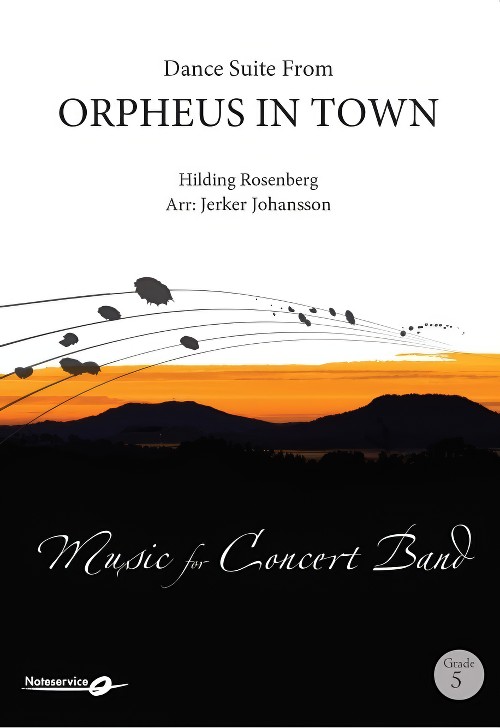 £242.50
£242.50Orpheus in Town, Dance Suite from (Concert Band - Score and Parts) - Rosenberg, Hilding - Johansson, Jerker
Dance Suite in Seven Movements. Op.75. Orpheus In Town. In 1936 the Stockholm Concert Hall was given its most distinguished artistic adornment, Carl Milles' Orpheus fountain. A Greek god lets his voice and the sounds of his lyre float over the rush and bustle of the big city far up in Ultima Thule. Two choreographers at the Stockholm Opera, Julian Algo and Vera Sager, had a brainwave. Why should Orpheus merely be a statue, a symbol of the beauty and inspiring power of music, why not give the myth about him its special Stockholm chapter as well? This is what happened: On the stage we see the columned facade of the Concert Hall and in front of it the statue group with Orpheus and the eight enraptured listeners. Suddenly the figures come to life, jump down from their pedestal and dance into the crowd at the marketplace. Orpheus, who is consumed by longing for Eurydice, begins looking for his beloved, first among other well-known sculptures in town, then in restaurants and nightclubs. At last he thinks he recognises her in a fashionable society woman and brings her to the Concert Hall. However, faced with the threat of having to spend her life in bronze at Orpheus' side, she runs away. She wasn't Eurydice after all. Or was she? For this ballet, which had its first performance at the Stockholm Opera in 1938, Hilding Rosenberg wrote vital and entertaining music in a style which is unusually to the point, and with a bright and strong orchestration. The music in the Dance Suite from Orpheus in Town is taken from the dance scenes at the nightclub: guests and a bartender perform, finally also Orpheus and his entourage. The suite consists of: 1. Rhythm of the Times (2.00); 2. Bartender's Dance (1.30); 3. Girl's Dance (1.00); 4. Dance of the Negress (2.30); 5. Trio Dance (1.30); 6. Tango (2.00); 7. Finale (1.30). Total duration: 14.00.
Estimated dispatch 7-14 working days
-
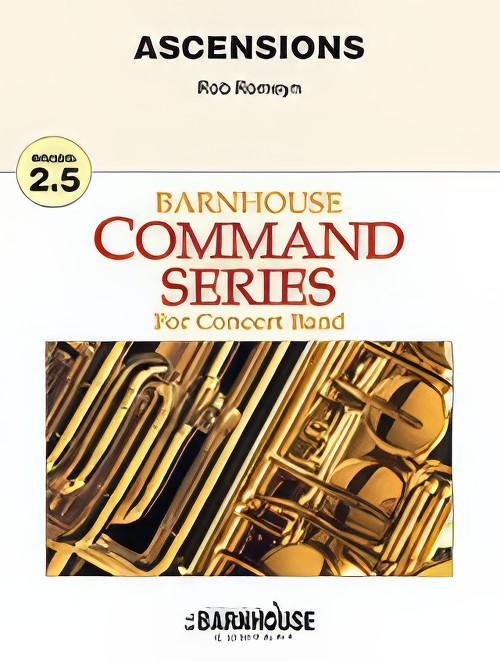 £59.00
£59.00Ascensions (Concert Band - Score and Parts) - Romeyn, Rob
Ascensions is an aggressive concert or festival work of unbridled energy and power! Ascending melodic themes and harmonic structures create tension, and are the basis for this creative and interesting composition. The melodic material is memorable and is shared throughout the entire ensemble, creating interest for the performer and listener alike. Contemporary harmonies, contrasting styles, dynamics, textures and the aforementioned "ascensions" create a dramatic and fresh compositional approach. This is musical adrenaline and excitement at its best! Duration: 3.15
Estimated dispatch 7-14 working days
-
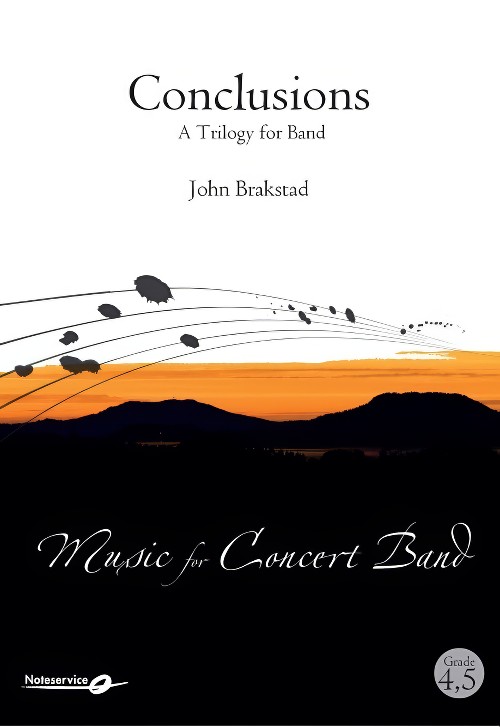 £140.00
£140.00Conclusions, A Trilogy for Band (Concert Band - Score and Parts) - Brakstad, John
Conclusions is inspired by three of the worlds greatest astronomers; their lifes, work and pioneering conclusions. 1: Copernicus. Nicolaus Copernicus lived in the 15th century. He introduced the idea that the planets rotate around the Sun rather than the Earth. This was a new and controversial world view which was not accepted in his lifetime. 2: Galileo. Galileo Galilei lived about a hundred years later and is sometimes called "the father of modern science". He is credited with the discovery of Jupiter's four largest moons. His discoveries supported Copernicus' model of the Solar System, and also showed that objects rotate around other planets than the Earth. Galilei was charged with heresy, and had to recant his claim that the Earth revolved around the Sun. "And yet it does move", he is supposed to have said. 3: Newton. Isaac Newton is known for his theory about the law of gravity and how it affects motion. This theory enabled him to accurately calculate the paths of the planets in the Solar System, and was a third conclusion in the astronomical tradition. In the same way that the three astronomers' independent conclusions build on ideas that are common to all three, Conclusions is built up of three independent movements which all include references to each other (melodic, harmonic, inversions etc.) Duration: 11.00
Estimated dispatch 7-14 working days
-
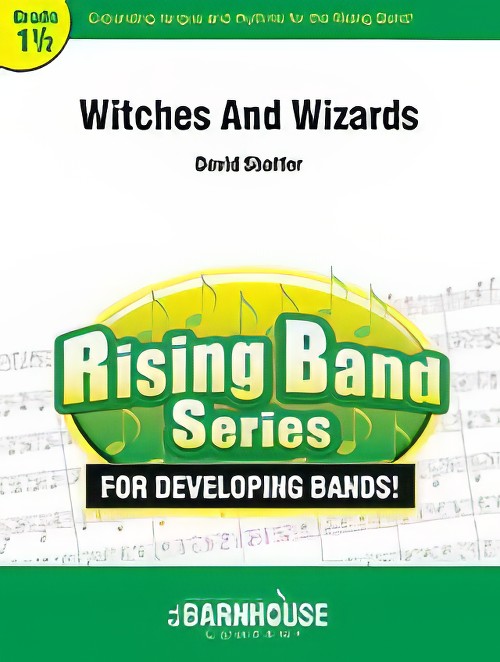 £49.00
£49.00Witches and Wizards (Concert Band - Score and Parts) - Shaffer, David
Listen, if you dare, as the witches concoct a kooky and mysterious melody of the macabre! Wizards engage in a diatonic discourse of delightful and delicate dissonance. The magic of "Witches and Wizards" will engage your inner spirits as a picture of mystery and mayhem is painted. Craftily written and arranged for the younger musicians, "Witches and Wizards" is sure to be the eerie and mystical hit of any concert! Duration: 2.00
Estimated dispatch 7-14 working days
-
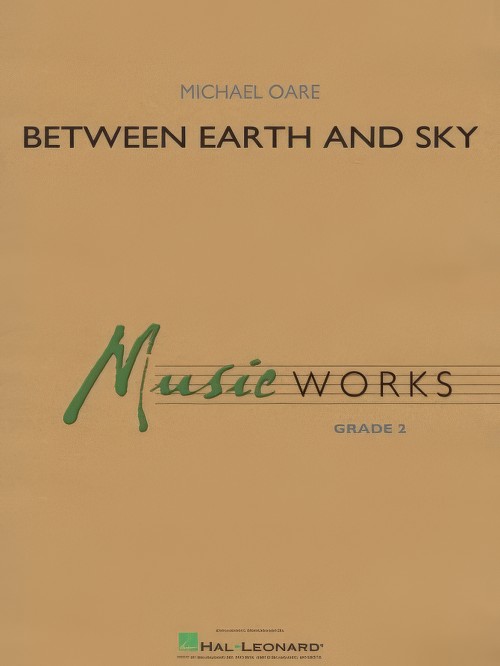 £57.50
£57.50Between Earth and Sky (Concert Band - Score and Parts) - Oare, Michael
Myths and legends of dragons have stirred our imaginations down through the ages. Between Earth and Sky is a programmatic work opening with mystical strains and haunting melodies. The pace quickens as our beast takes flight and soars over the countryside; musically propelled by a driving 3/4 pulse and powerful thematic statements. All beautifully paced with variations in textures and dynamics, this is an effective and appealing work for young players.
Estimated dispatch 7-14 working days
-
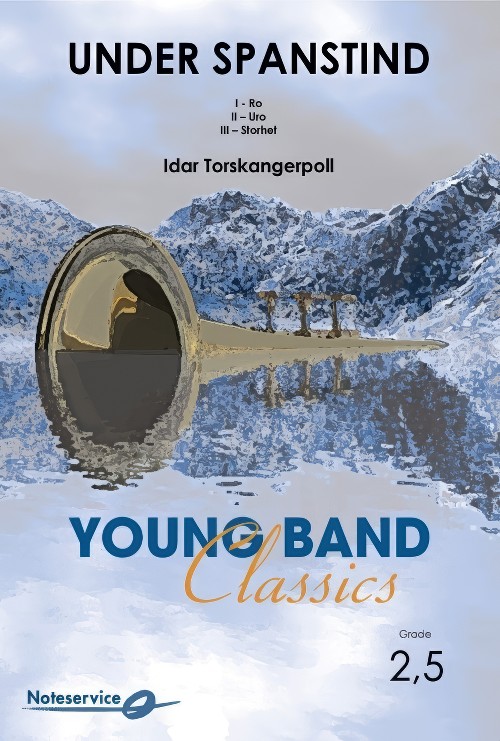 £85.00
£85.00Under Spanstind (Concert Band - Score and Parts) - Torskangerpoll, Idar
Suite in Three MovementsThis piece of music is a commissioned work for Lavangen School band and their band music convention in 2019. The piece was performed under the mountain Spanstind (located far north in Norway) by a band consisting of approx 400 amateur musicians. The mountain Spanstind is 1457 meters high and drops into the valley Spansdalen below, an especially scenic venue.The composition is inspired by the sami joik (folk song) Ru?gu?ohkka, the song to Spanstinden. It is also inspired by the nature of the surroundings. Mvt 1 "Ro" (calmless) describes the feeling of calmness in the midnight sun. Mvt. 2 "Uro" (unrest) describes a scene of wind, snow, avalance and the big forces of nature. Mvt 3 "Storhet" (greatness) describes the feeling of greatness the nature has, and how we experience it as majestic and exalted.The piece can be played with the movements alone, or one can add the signals played by soloist(s) off-stage or in the back of the hall. The signals are to be played before, in between, and after the 3 movements. All instruments can be soloists. The soloist performs the signals rhythmically aleatoric, where each soloist repeats the signal 4 times in his or her own tempo. Signal 1 is played before Mvt 1, signal 2 is played between Mvt 1 and 2, signal 3 is played between Mvt 2 and 3, and signal 4 is played while the band holds the last note (long, use stagger breathing). after a while, all the soloists end on the same note and the music fade out.Duration: 6.30
Estimated dispatch 7-14 working days
-
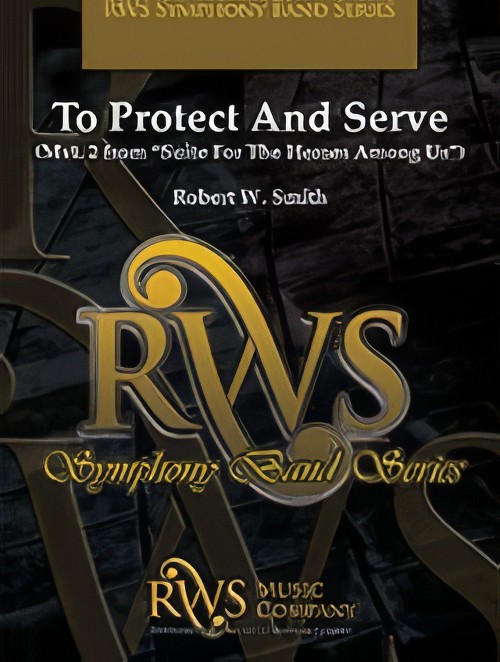 £100.00
£100.00To Protect and Serve (Concert Band - Score and Parts) - Smith, Robert W.
Suite for the Heroes Among Us is a musical tribute from master composer Robert W. Smith to the everyday heroes that dedicate their lives to the care and protection of us all. The third movement To Protect And Serve is dedicated to the law enforcement professionals that serve our communities each and every day. This bold and powerful musical statement is appropriate for concert, festival and ceremonial use throughout the year. Combined with Fire and Heal (Mvts. 1 and 2), Suite for the Heroes Among Us is programmable and appropriate in every community in the world. Duration: 4.00
Estimated dispatch 7-14 working days
